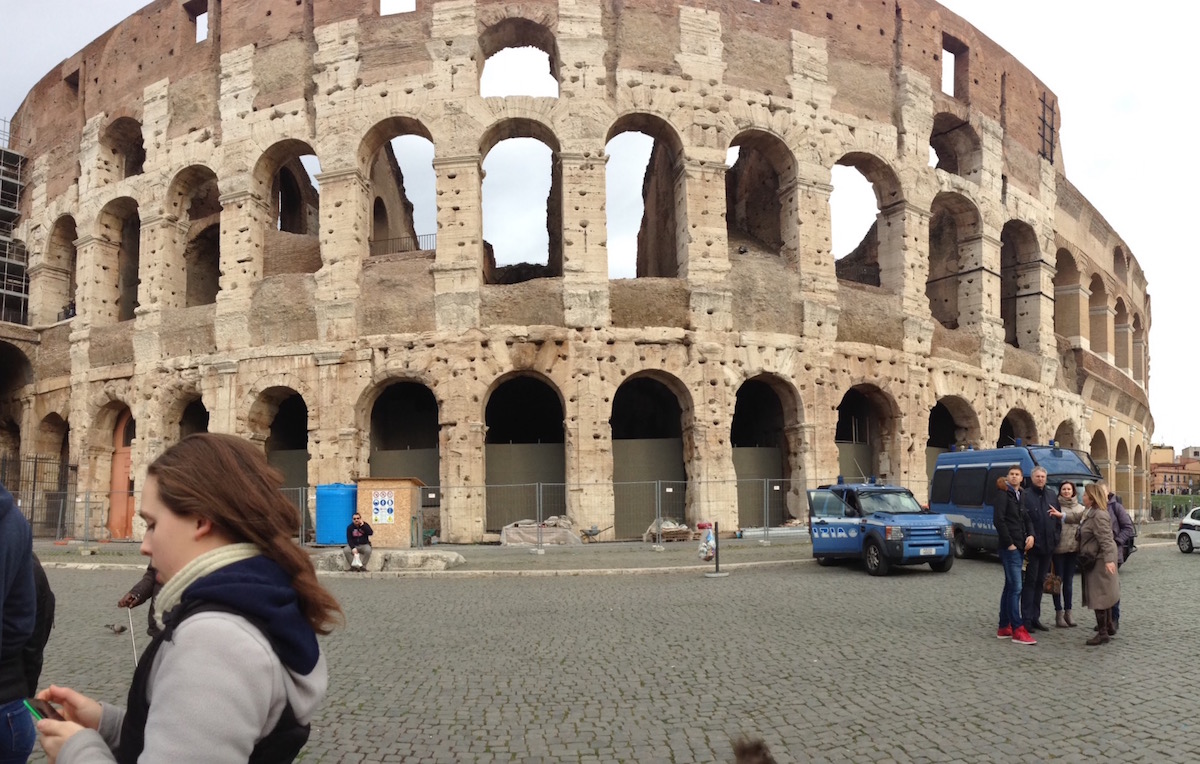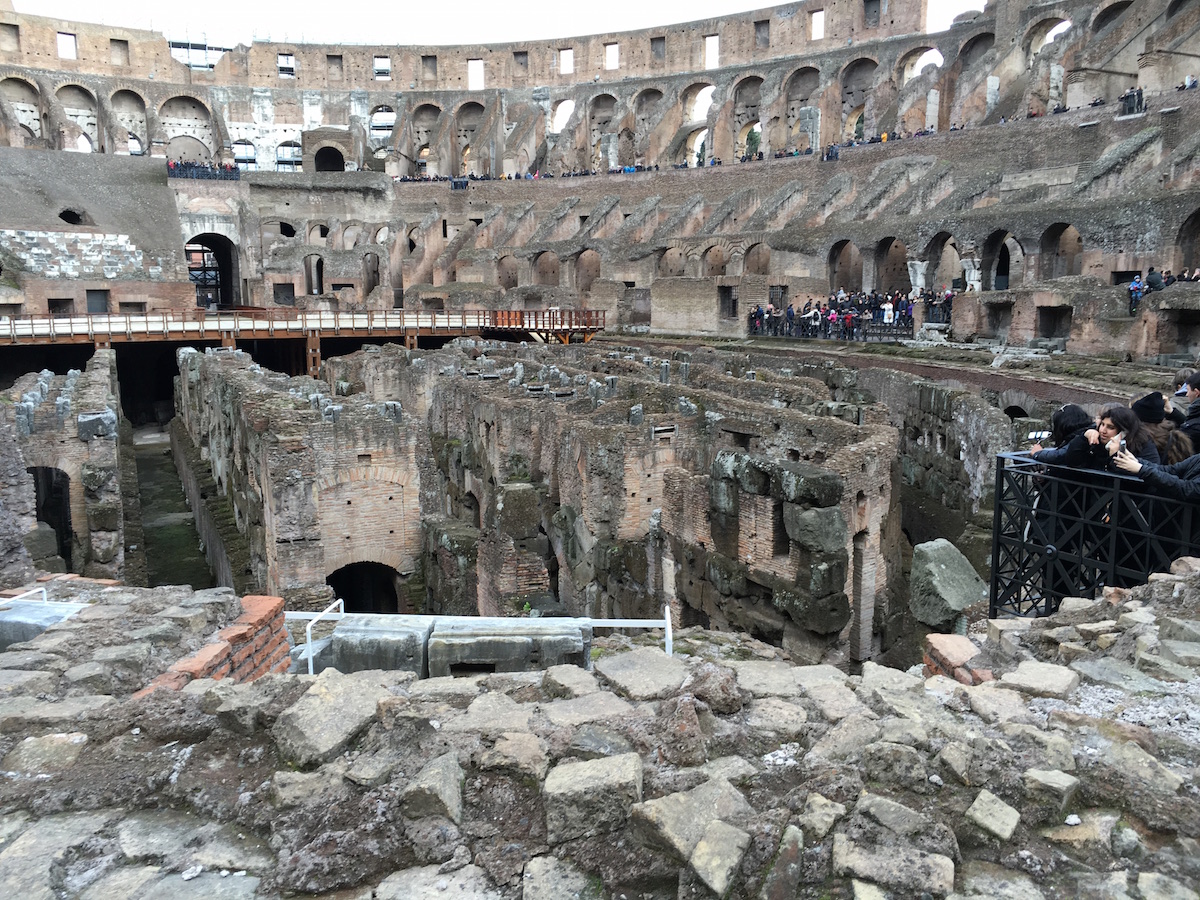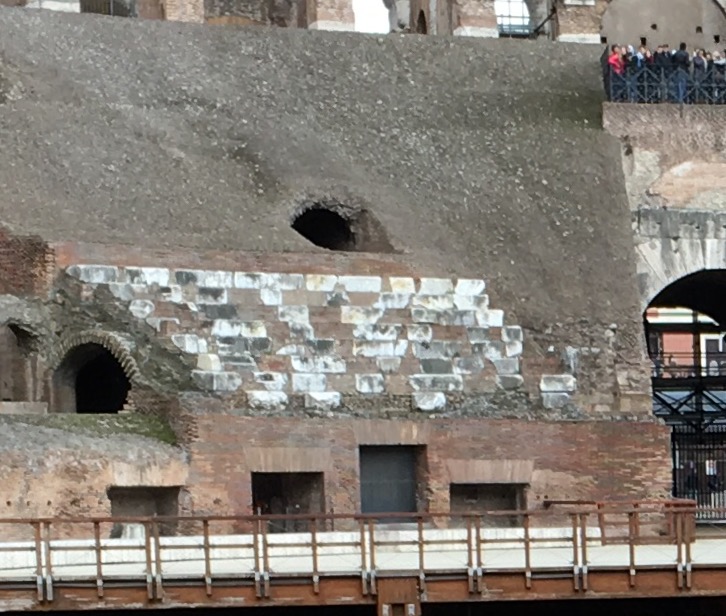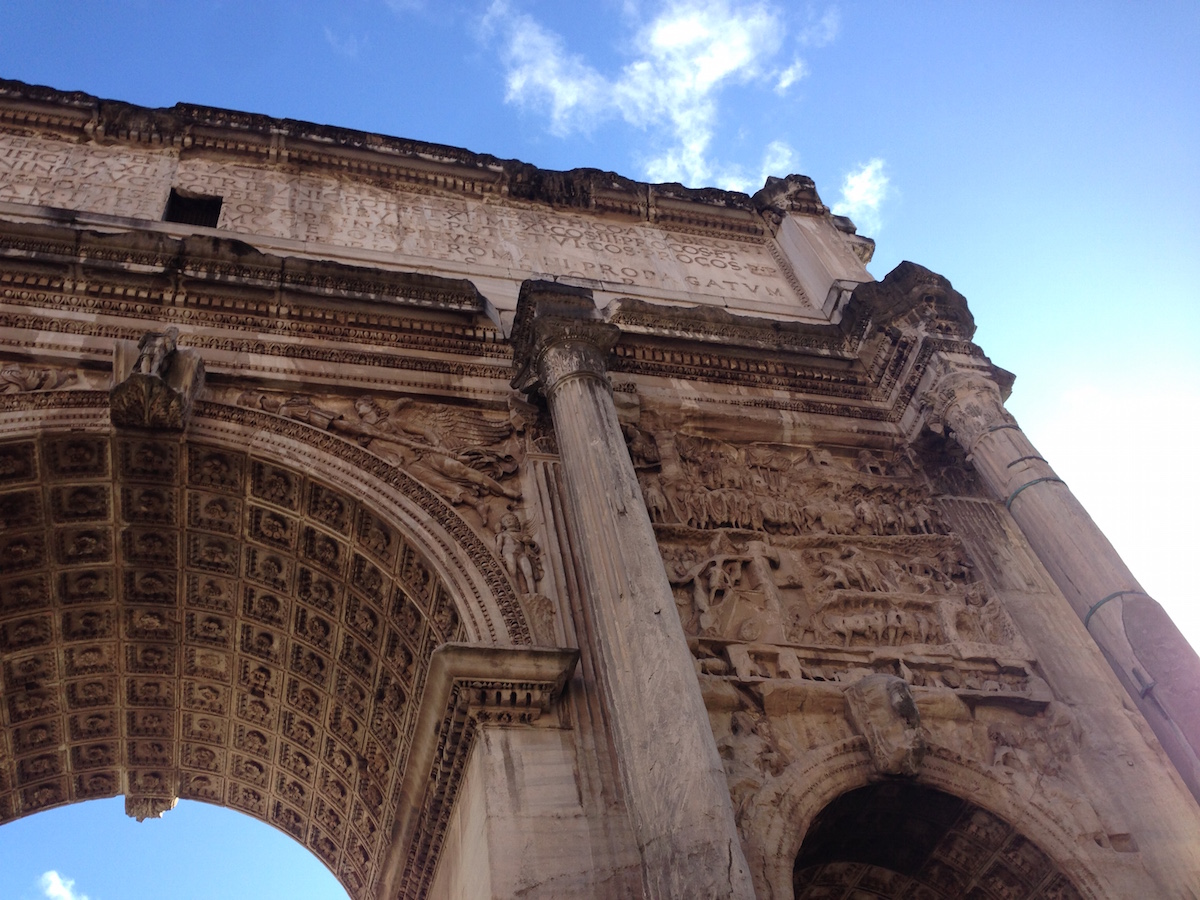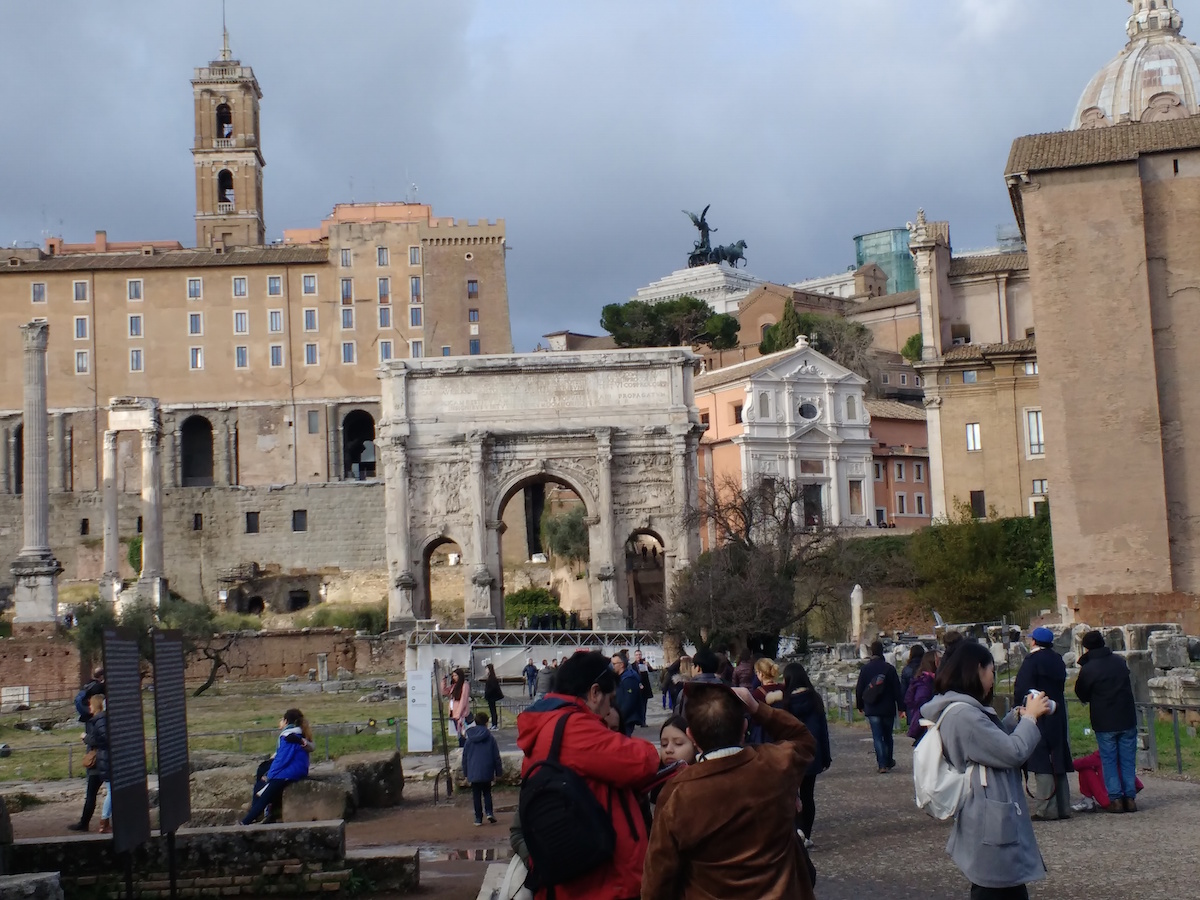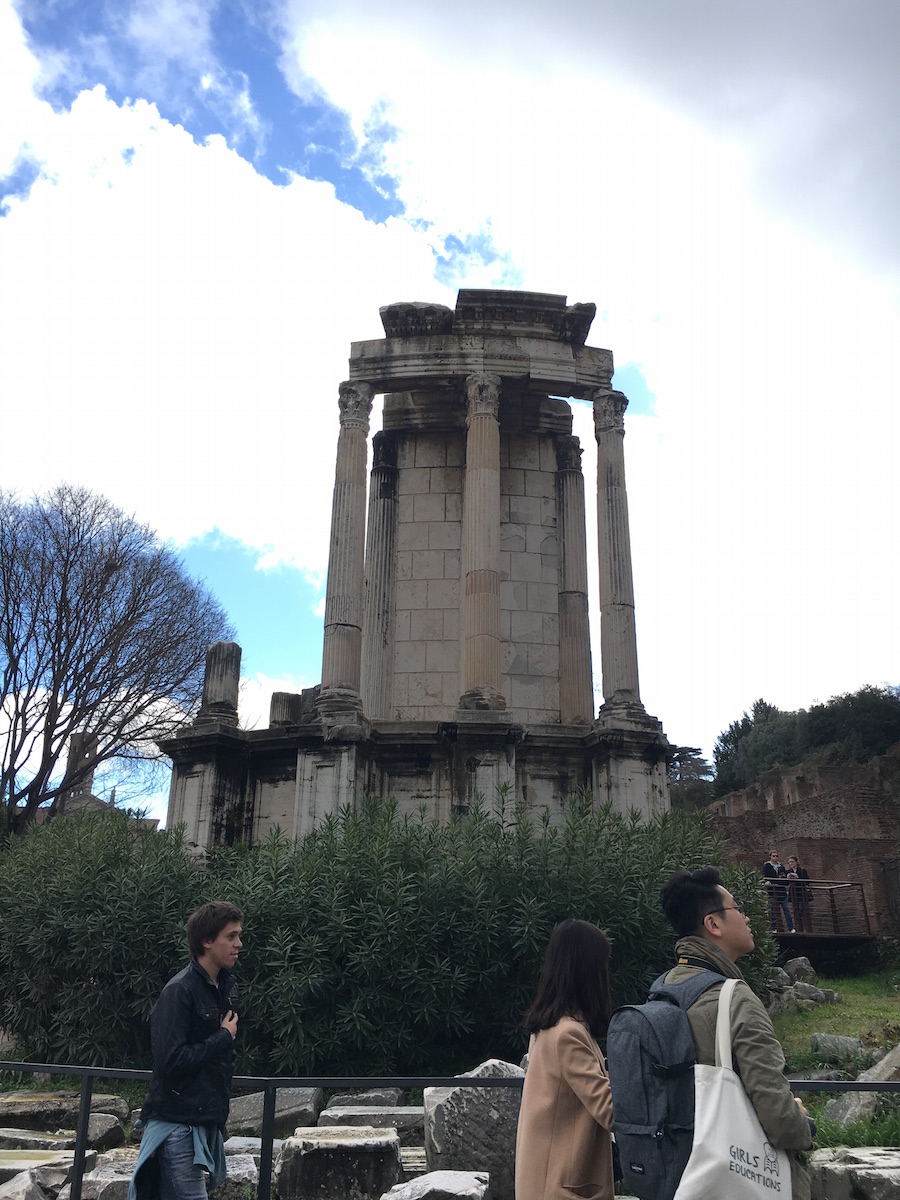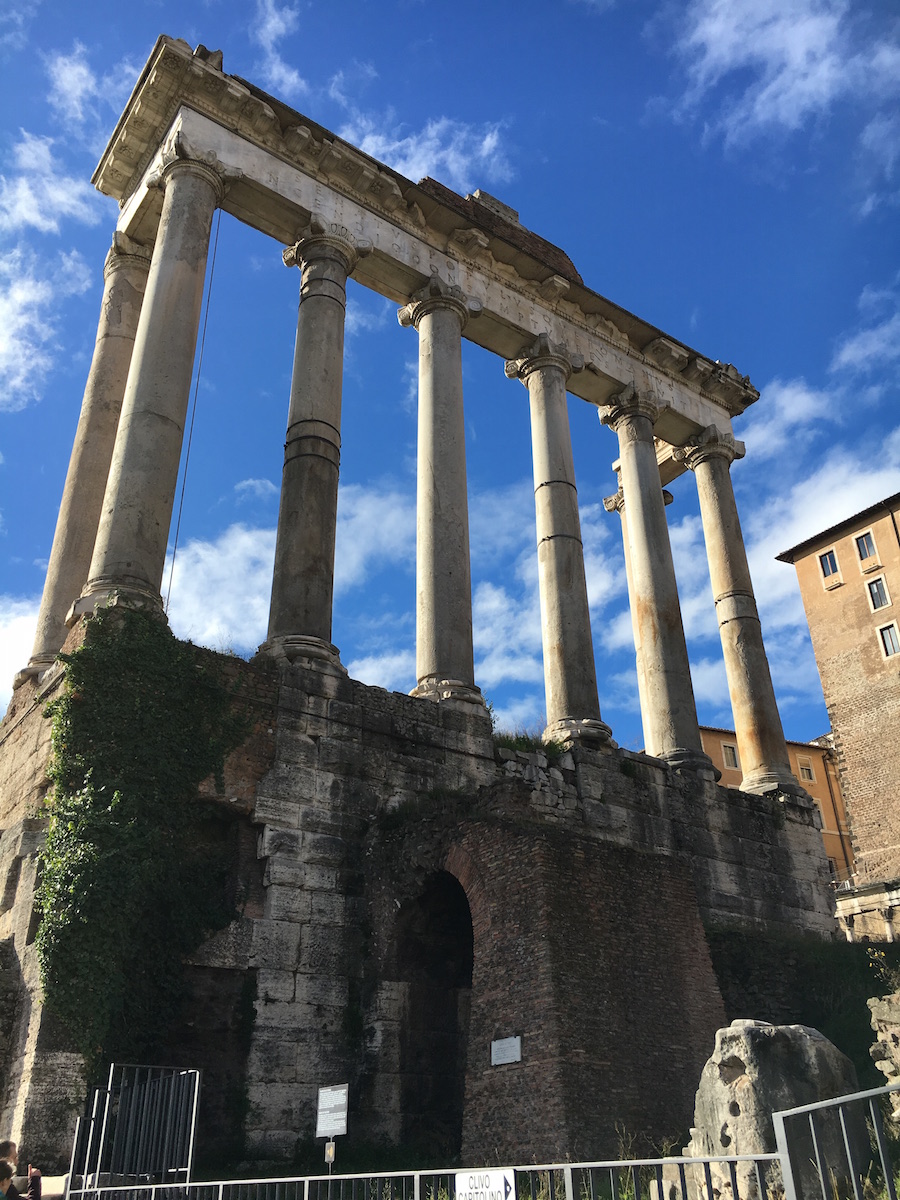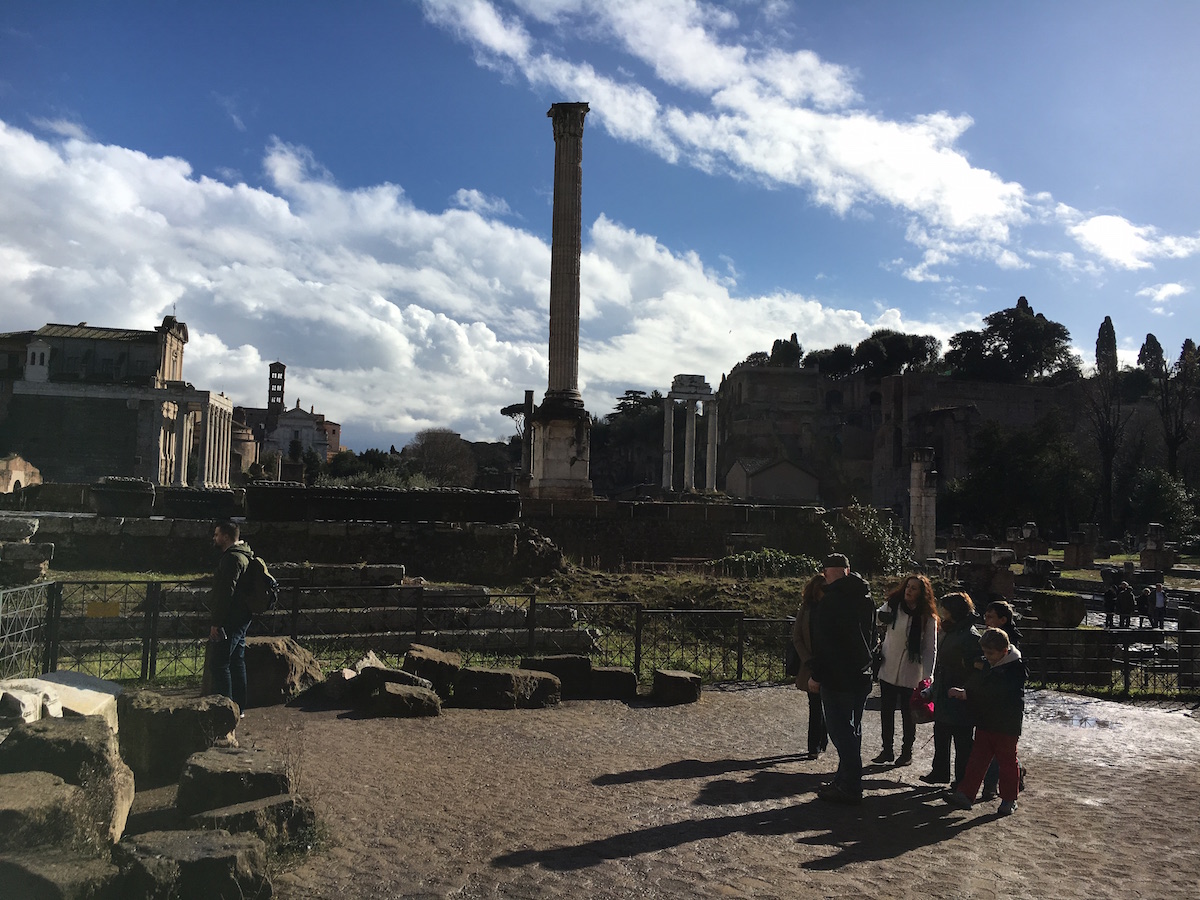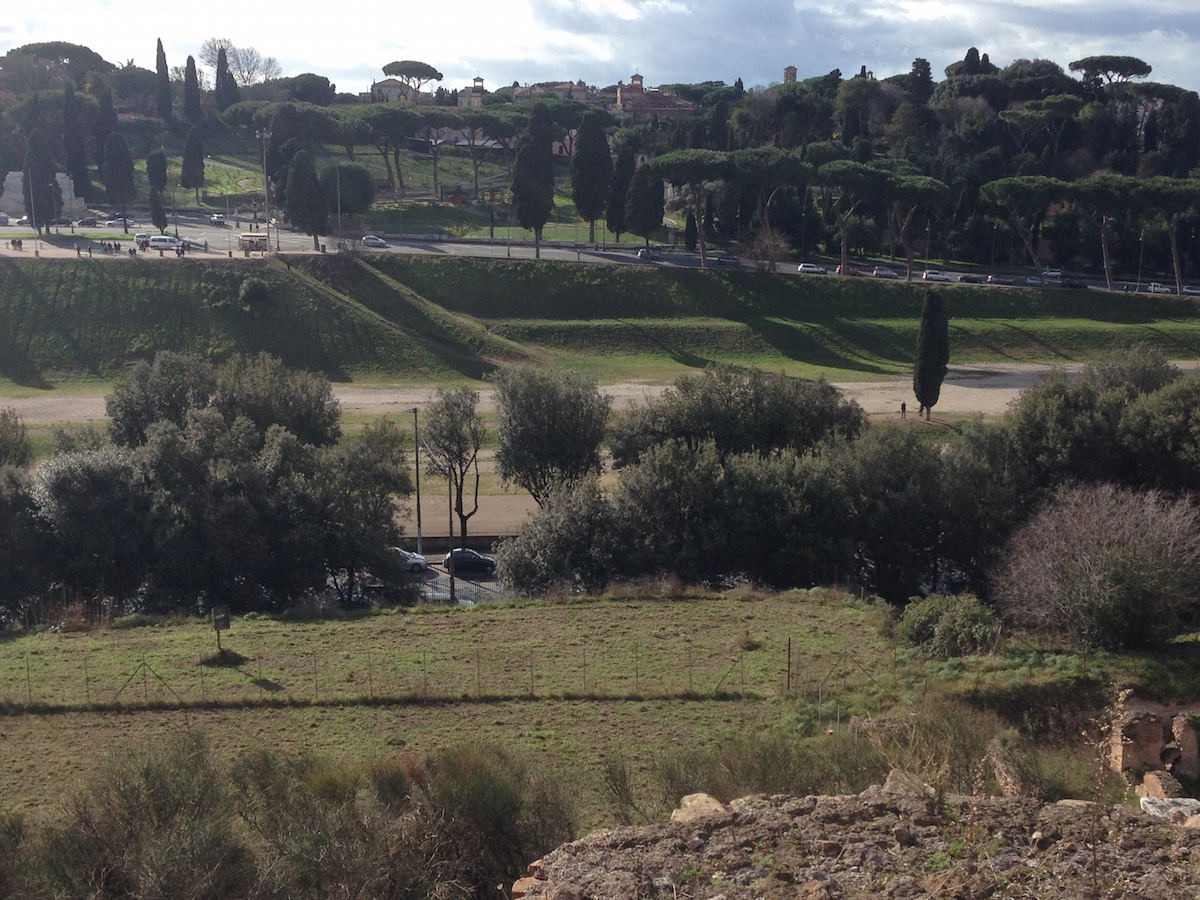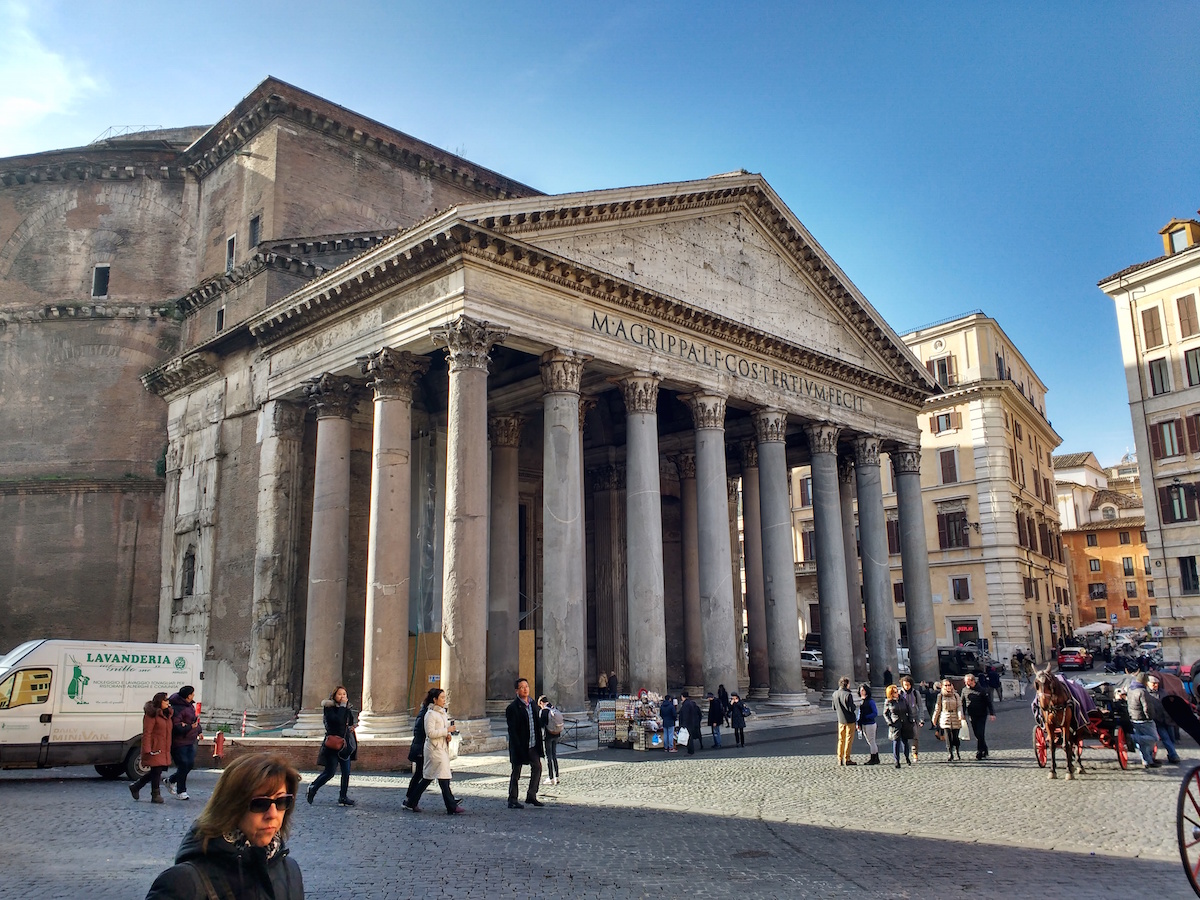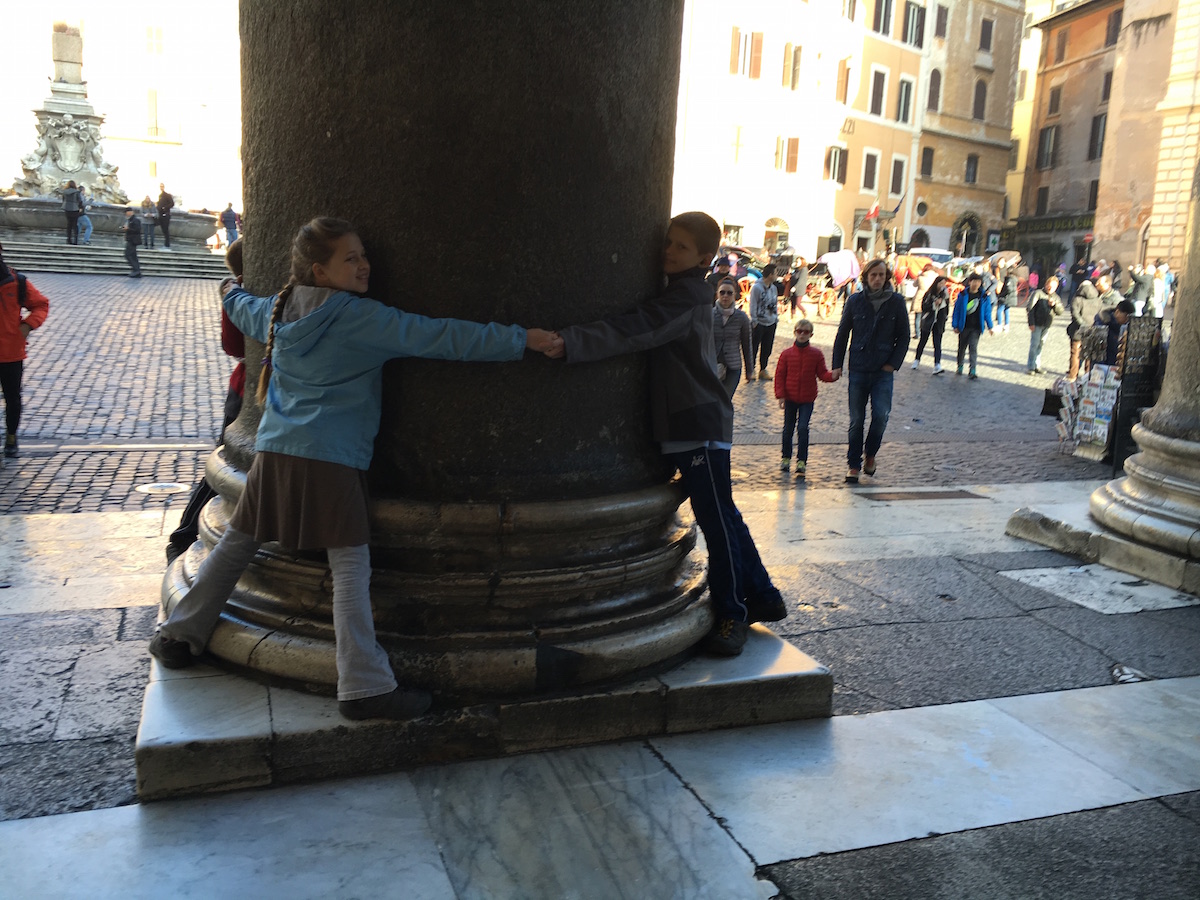ROME1
Our first house in Rome or Roma (as the Italians call it) was 45 min. outside the city. [We moved into the city for a reason I will explain later.] We decided to take the train in and drove to the train station at about 11:00am. We waited there for about half an hour and we were not the only ones waiting. No train was coming it seemed, we finally found out the next train was due in about 2 hours! We drove home and ate lunch and made it back in time for the train. The ride was uneventful and it was very hard to stay awake. We arrived in center city Rome, changed to the Metro and got off at the Colosseum stop. We walked out and gazed up at the 2,000 year old structure.
The Colosseum is a colossal amphitheater, it is also the most complex amphitheater the Romans built. When we walked in my first thought was 'Where are the seats?'
And what about the floor?
From listening to a Rick Steves' (a traveling professional) audio guide I found out where they had gone. The floor had been made of wood with 9" of sand on top and the wood rotted away. But what about that labyrinth the floor once covered, what is it for? The hypogeum as it is called, was the support for the floor, cages for the animals, and warm up area for the gladiators. 80 vertical elevator shafts allowed animals to be brought up to the floor from their cages.
After the fall of the Roman empire, the Colosseum was used as a quarry for the stone and metal that was in the building. The marble seats went with the stone raids. A single family took away so much the saying became Quod non fecerunt barbari, fecerunt Barberini, which translates to: anything the barbarians didn't do the Barberini did. You can even see lots of places where metal was removed. The seats you can see are ones that have been restored.
The majority of the games in the amphitheater were quite awful. Not only did they martyr early Christians they also watched gladiators fight lions and bears, even other gladiators. Dogs would bloody themselves on porcupines and hunters would hunt animals in make-shift forests. And with the 80 elevators the hunter would never know where the animals would be coming from, much to the amusement of the spectators. Condemned criminals would even star in plays featuring their own death! Perfume was often sprayed around to quench the smell of the blood! The inauguration of the Colosseum lasted 100 days. In that time 9,000 wild animals were killed and over 2,000 gladiators met their end.
OK, enough of that, we called it a day and went home. That night dad decided to move to a different house because of a problem with the internet (dad needs it to work). We moved the next morning into a house in downtown Rome.
The Roman forum. The header picture is of the Forum. Because of construction we couldn't enter through the Arch Of Titus but had to go the long way around to the back of the Forum. The Arch Of Titus was made to commemorate the triumph over the Jews. The Romans were tolerant of religion as long you worshiped Caesar as a god, which was not a problem because most people had many gods on their prayer list, except for the Jews who worshiped only one God. The Jews rebelled, the Romans won; they took 50,000 Jews as slaves and with booty from the temple built the Colosseum. The Jewish prisoners were forced to build the arch to celebrate their defeat.
We walked down the Via Sacra to the Forum's square. This rectangular patch of grass is the main square of ancient Rome. The square or piazza was surrounded by temples, government buildings, and triumphal arches. This is where Rome was born. According to legend, twin brothers Romulus and Remus were orphaned in infancy and raised by a she-wolf right on top of Palatine hill. But it was a bit hard to find women so they and their cohorts attacked a neighboring tribe and kidnapped all their women or so went the legend. And so Rome was begun. The piazza has reflected and accommodated the out-going nature of Italians since Roman times. Although the Forum housed Rome's grandest temples and important government buildings, the piazza was also a bustling marketplace; fast-food vendors were everywhere since Romans rarely cooked for themselves in their cramped apartments. The Forum was a melting pot of people from the far-flung Roman world; foreigners, citizens, slaves, noblemen, and businessmen all rubbed shoulders here in the peace and prosperity that came with Roman rule.
On the side of the piazza closest to the Colosseum is the tiny temple/shine where Julius Caesar was buried after his assassination in 44 BC.
To the right of the temple of Julius Caesar when you stand with your back to the piazza, we looked at the remains of the ruins of the temple of Vesta. Inside the temple was the sacred fire that the 6 Vestal Virgins took care of and never let go out. The Romans prided themselves on their family values. They venerated their ancestors even keeping small statues of them in sacred shrines in there houses. This temple represented their family values on a large scale. The fire symbolized the heart of the extended family that was Rome.
Behind the temple is where the Vestal Virgins lived. The virgins were revered by the Romans. They had the power to pardon condemned criminals, they had their own special box at the Colosseum, and their residence wasn't shabby either. The virgins were chosen from noble families before they were ten. Each served a 30 year period as ritual housekeepers for the temple home of the goddess Vesta. If they served their term faithfully they were given a huge dowry and allowed to marry. If any fault was found she was strapped to a funeral cart, paraded through the streets, brought to a crypt, given some bread and a lamp, then buried alive. Most suffered the latter fate. The 2 pools in the the Virgins courtyard were surrounded by a covered walkway and statues of illustrious vestal virgins.
On the opposite corner of the temple of Vesta is the Curia or the Senate House, the oldest and most important political building in the Forum. Since the birth of the republic this was the site of the center of government. 300 senators elected by the citizens of the Roman empire donned their togas, tucked their scrolls under their arms and climbed the steps of this old house. Inside they made speeches, debated policy and created the laws of the land seated on bleachers stacked three tiers high. At the far end sat the Senate President or later the emperor at his podium. Rome prided itself on being a republic. Early in it's history the people deposed the king and established rule by elected representatives. Each citizen was free to speak his mind and take part in public policy. Even when the emperor became the supreme authority the Senate was a power to be reckoned with. The present Curia is very well preserved dating from 283 AD. In early Christian times it was used as a church, now it is just a historical relic.
The above picture of eight pillars was the west end of the oldest temple in Europe, the Temple of Saturn dating from about 500 BC. Inside the temple before it was destroyed was an humble wooden statue of, well of course, Saturn. The temple's claim to fame was it's pedestal that held the state treasury of Rome.
In the middle of the piazza is one of the final monuments of Rome, the column of Phocas. It was a gift from the new dominant empire -Byzantium, to the old fallen empire -Rome. It is sort of like a symbolic last nail in Rome's coffin. In the year 476 AD the last reigning emperor checked out and switched off the light so to speak, plunging Europe into chaos, The Dark Ages. After 1,000 years of reign the once great empire had finally disintegrated.
We walked up palatine hill and looked out east over the forum and westward toward Circus Maximus which is a race track to the west of the Forum.
We went home that day tired.
Thursday we went to the best preserved structure of old Rome, the Pantheon. The Pantheon was a Roman temple dedicated to pan all the gods theos. The concrete (a Roman invention) dome is the big draw, being as wide as it is tall, 142'. The dome was also the biggest in the world when it was built. It is the dome that inspired Brunelleschi who built the first Renaissance dome (none were built in the dark ages) in Florence and Michelangelo who built St. Peter's dome in Vatican city, even the Washington D.C. Capitol Building was based on this design. A legend in the Dark Ages said it was built over a big pile of dirt laced with coins (so the poor would take the dirt away afterward) as a mold, which is not true. It was built using wooden scaffolding to support wooden molds for the concrete. At the top is a hole 30' wide, it is the only source of light. But what happens when it rains? Everyone gets wet! In the picture above of the Pantheon you can see the roof line of the pediment seems to be too low. It is because of the columns; unlike others, which are a bunch of different pieces stacked up, these are one piece. They were quarried and sculpted in far away Egypt and shipped across the Mediterranean, but they were too short. They used them anyway because it was hard to get 16 columns each 40' tall and weighing 55 tons! It takes four people to hug one of the 15' in circumference columns.
WOW! was my first thought as I walked inside, and for a good reason the dome was stunning. The Pantheon had lots of changes over the years. When it was built it was used for a temple for all the gods. When the Roman empire became Christian the Pantheon became a cathedral, now it is a chapel and a grave for some famous Italians.
This post is starting to get a bit long I will make a second part.


